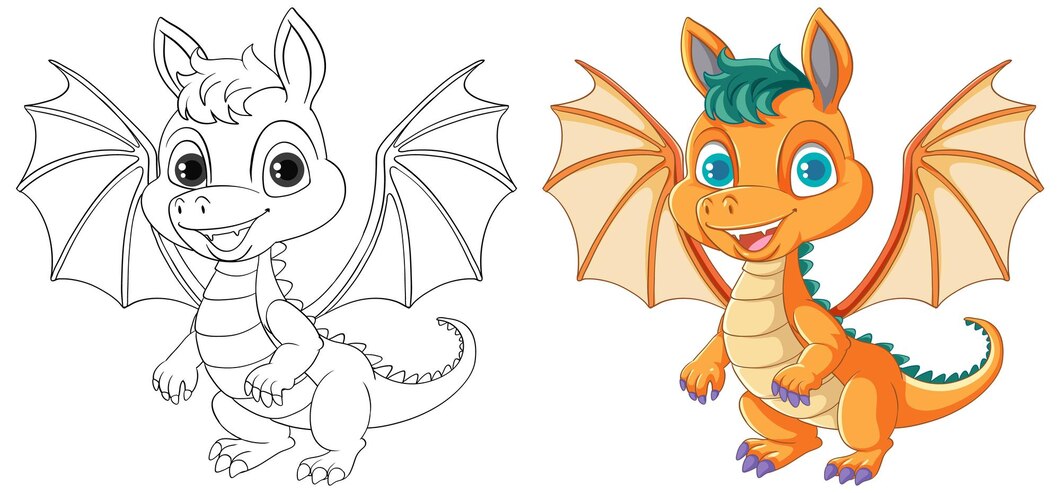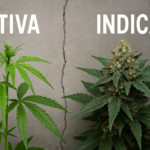If you have ever looked at fantasy books, movies, or games, you have probably seen dragons in all shapes and sizes. They breathe fire, soar through the skies, and stand as symbols of strength and mystery. It’s no wonder so many artists and beginners want to learn how to draw a dragon. Drawing a dragon is not just about sketching a creature; it’s about capturing imagination, combining elements of real animals, and creating something that feels alive.
Dragons are such a popular subject in art because they are both universal and personal. Every culture has its own version of the dragon, from fierce European beasts to graceful Asian serpentine figures. They allow artists to be creative, adding horns, wings, scales, or even human-like expressions.
In this guide, you will learn how to break down the process of drawing a dragon step by step. We’ll start with the basics of body shapes and proportions, move on to details like wings and scales, and finally explore how to bring your dragon to life with shading and color. By the end, you’ll not only know the techniques but also gain confidence to create your own unique dragon style.
Understanding the Basics of Dragon Drawing
Before putting pencil to paper, it helps to understand what makes a dragon recognizable. Most dragons are built from familiar shapes: the body of a lizard, the wings of a bat, the claws of an eagle, or the head of a dinosaur. Breaking them down into these simple components makes the process less intimidating.
At the same time, dragons are flexible creatures. You can design them to look realistic, as if they truly walked the earth, or lean toward a cartoon or fantasy style, where exaggeration and playfulness are the focus. A realistic dragon might show muscle structure and carefully shaded scales, while a cartoon dragon could have oversized eyes, short stubby wings, or even a friendly smile. Choosing your style at the beginning gives you a clear direction, whether you want dramatic realism or lighthearted fun.
Essential Tools and Materials for Dragon Art
Drawing a dragon does not require expensive tools, but the right materials can make the process smoother. A set of pencils with varying hardness, from light sketching pencils to darker shading ones, helps build contrast and detail. Good quality paper prevents smudging and allows for cleaner erasing when refining shapes.
For those working digitally, a drawing tablet and software like Procreate, Photoshop, or Krita provide endless flexibility. Layers let you sketch, refine, and color without worrying about erasing mistakes. Digital brushes can even mimic traditional pencil textures, making it easier to experiment with shading and scales.
Using the right tools is not about being fancy; it’s about making the drawing process more enjoyable. When your materials support your creativity, you can focus fully on learning how to draw a dragon instead of struggling with smudges or broken lines.
Breaking Down the Dragon’s Body
Every successful dragon drawing starts with simple shapes. Think of the dragon’s body as a series of circles and ovals connected by lines. A large oval might represent the torso, a smaller circle the head, and long lines the spine and tail. This “skeleton” gives your dragon structure and makes it easier to adjust proportions before adding detail.
Mapping symmetry is also important. Dragons are usually balanced creatures, so drawing a centerline down the body helps keep both sides even. Proportions depend on your style: a European-style dragon may have a bulky chest and long wings, while an Asian dragon has a slimmer, snake-like form. By starting with these basic shapes, you set the stage for a believable and well-structured dragon.
Drawing the Dragon’s Head and Facial Details
The head is often the most expressive part of a dragon, and getting it right can make your entire drawing stand out. Start with a simple shape, like a triangle or oval, and then refine it into a jawline, snout, and eye sockets.
Expressions bring personality. A dragon can look fierce, wise, playful, or even kind depending on how you draw the eyes and mouth. Sharp, narrow eyes give intensity, while rounder eyes create a softer mood. Horns, spikes, and frills add uniqueness, turning a generic dragon into your personal creation.
Adding details like nostrils, teeth, or a forked tongue gives extra realism. When thinking about how to draw a dragon head, remember that small adjustments can completely change how your creature is perceived.
Crafting Wings, Tails, and Claws
Wings are one of the trickiest parts of dragon drawing, but also the most rewarding. Most dragon wings resemble bat wings, with long finger-like bones stretched by thin membranes. Start by sketching the bone structure first, then connect the lines with curved shapes for the wing skin. To make wings look powerful, exaggerate their size and add folds where the membrane stretches.
The tail is another chance to add movement and personality. A long, curling tail can look elegant, while a spiked or armored tail adds danger. Similarly, claws are not just details—they show the strength and function of your dragon. Sharp talons gripping the ground suggest weight and power, while softer claws on a cartoon dragon may look more playful.
Adding Texture, Scales, and Final Details
Once the main structure is complete, you can bring your dragon to life with textures. Scales are the most iconic dragon feature, but they do not need to be drawn one by one. Instead, suggest them with patterns, shading, or grouped shapes. Larger scales can go along the belly and back, while smaller ones cover the face and limbs.
Shading adds depth. By imagining where the light falls, you can darken areas like under the belly or behind the wings. This creates a three-dimensional effect that makes the dragon feel solid. Adding final details such as scars, glowing eyes, or unique markings helps your dragon stand out as a one-of-a-kind creation.
Coloring and Bringing Your Dragon to Life
Color choice is more than decoration—it sets the mood of your artwork. A red dragon suggests fire and aggression, a green dragon might feel connected to forests, while a shimmering blue dragon could appear magical or water-based. Experimenting with colors helps you decide what personality your dragon should have.
Traditional coloring with colored pencils or paints allows blending and texture, while digital coloring offers tools like gradients, layers, and glowing effects. The key is to blend colors smoothly so the dragon looks natural, even in a fantasy world. Shading with darker tones along the belly or wings adds realism, while highlights make scales shine.
Practice Tips to Improve Your Dragon Drawings
Learning how to draw a dragon is a skill that improves with consistent practice. Your first dragon may look stiff, but each attempt will teach you something new. One way to refine your skills is by studying real animals. Look at lizards, bats, and birds for inspiration, since dragons often borrow features from them.
Try drawing the same dragon in different poses to understand movement. Flying, sitting, or roaring poses challenge your sense of anatomy and proportion. Over time, your confidence grows, and you’ll find it easier to experiment with new ideas.
Simple exercises, like sketching dragon heads quickly or practicing wing shapes, build muscle memory. The more you draw, the more natural the process becomes, until creating dragons feels effortless.
Conclusion
Drawing a dragon is a rewarding journey that combines imagination with observation. By starting with basic shapes, refining body structure, and adding details like wings, scales, and color, you can turn a blank page into a mythical creature full of life.
Learning how to draw a dragon takes patience, but every step teaches you something new about form, expression, and creativity. The key is to keep practicing, experimenting with styles, and developing your own unique approach.
Whether you aim for a fierce fire-breathing beast or a gentle, cartoon-like dragon, the process is always an opportunity to grow as an artist. Pick up your pencil, tablet, or paintbrush today and let your imagination guide you—the next dragon you draw might just be your masterpiece.
My name is Mustafa, and I have been blogging for over 5 years. I am passionate about sharing complete, accurate, and helpful information with my readers. Along with managing content on The Matcha Read, I also contribute blog posts to premium websites. My goal is to provide valuable insights in a clear and easy-to-understand way, so every reader walks away with useful knowledge.










